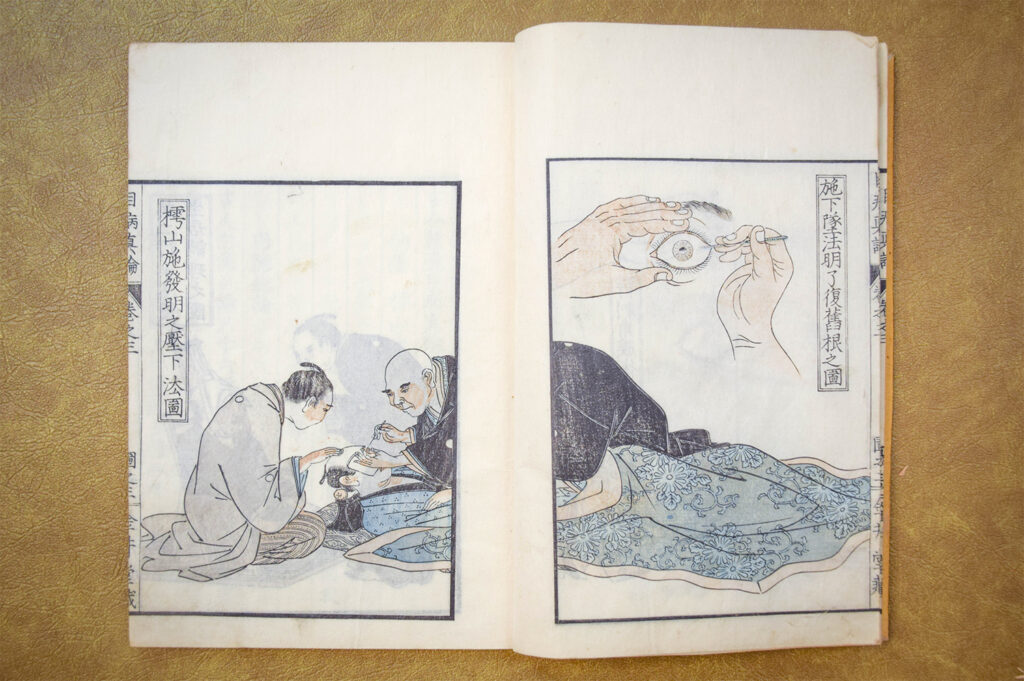Becker Medical Library is delighted to share our most recent addition to the rare book collections! A copy of the Edo-period ophthalmologist Dojun Nakanome’s text Ganmoku Shinron; Kokon seisen mokubyo shinron, or Selected True Ophthalmology of All Times, printed in 1850. The library is home to the Becker Collection in Ophthalmology and Optics, one of the most outstanding collections of rare texts in the field, and the Ganmoku Shinron broadens its scope to look beyond the European tradition toward ophthalmology in East Asia.

While the text is printed entirely in Japanese, the illustrations show the influence of Dutch scholarship. Nakanome worked during Japan’s Edo period, when the country existed under the policy of sakoku (“closed country”), a foreign policy that severely limited contact between foreign nations and Japan. The only Western power Japan maintained relations with was the Dutch, who were mostly confined to Dejima, an artificial fan-shaped island in Nagasaki Bay. Dejima was a place where scholarship was exchanged along with material goods, giving rise to a genre of learning called rangaku (“Western learning”).
The Ganmoku Shinron provides visual evidence of this intellectual exchange. In addition to woodblock illustrations showing Japanese medical treatments, it includes an illustration of a European physician performing a cataract treatment that is remarkably similar to the frontispiece of Heister Lorenz’s 1713 text De cataracta (another work in the Becker collection), depictions of European-style medical instruments, and a camera obscura; as well as a portrayal of Chinese physicians performing eye surgery. Nakanome was interested in the best ophthalmological practices of all traditions, whether they were Japanese, Chinese, or European, and his text reflects this approach.


The Ganmoku Shinron illustrates the international nature of medicine. Medical ideas have percolated through different cultures from antiquity onward, and this text shows how different schools of thought can come together in one work. We look forward to continuing to grow our collections in this area, and are grateful to the Bernard and Janet Becker Rare Book Fund for making its acquisition possible.
